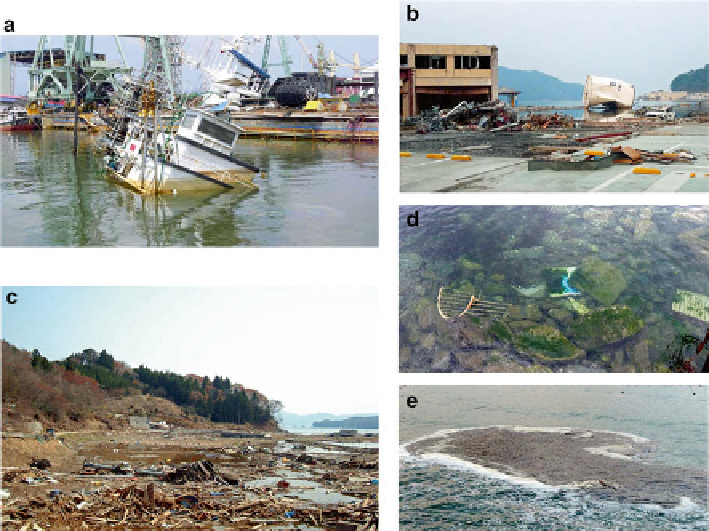Environmental Engineering Reference
In-Depth Information
aquifers could be high at locations where high soil permeability and porosity exist.
Moreover, contaminated groundwater could in turn contaminate coastal waters
through submarine ground discharge (SGD) as shown by Slomp and Van Cappellen
(
2004
), Swarzenski and Gibbons (
2009
) and Kontar et al. (
2013
). Hazardous and
toxic substances leached from debris stock piles and treated wood in certain areas
or hot spots are likely to have seeped into the ground as well, eventually reaching
bottom coastal waters through SGD aside of surface water fl ows.
To reduce the possibility of contamination of aquatic environments by chemically-
treated wood debris, proper management must be undertaken. Countries such as the
USA and Canada have developed some guidelines; Canada has recommended
keeping treated wood debris and related chips and sawdust away from aquatic
environments, particularly in low-fl ow riparian systems as well as covering the
ground (Government of British Columbia
2013
). This practice may also apply to
temporary debris storage sites. Kakitani et al. (
2006
) proposed the use of bioxalate
solution with sodium hydroxide to reduce the risk of pollution by heavy metals and
arsenic present in CCA, ACQ and CUAZ treated wood.
The areas along Tohoku's coastline hit by the tsunami are considered a “ Na-tech”
disaster (Young et al.
2003
). These events contaminate inland and marine waters
(Fig.
17.10
) posing a high risk to the environment due to the presence of pollutants,
Fig. 17.10
Post disaster scene in Ishinomaki port (
a
), Onagawa town (
b
) and Shizugawa beach
side (
c
). Submerged (
d
); and fl oating (
e
) debris in Minamisanriku city. Miyagi Prefecture

Search WWH ::

Custom Search